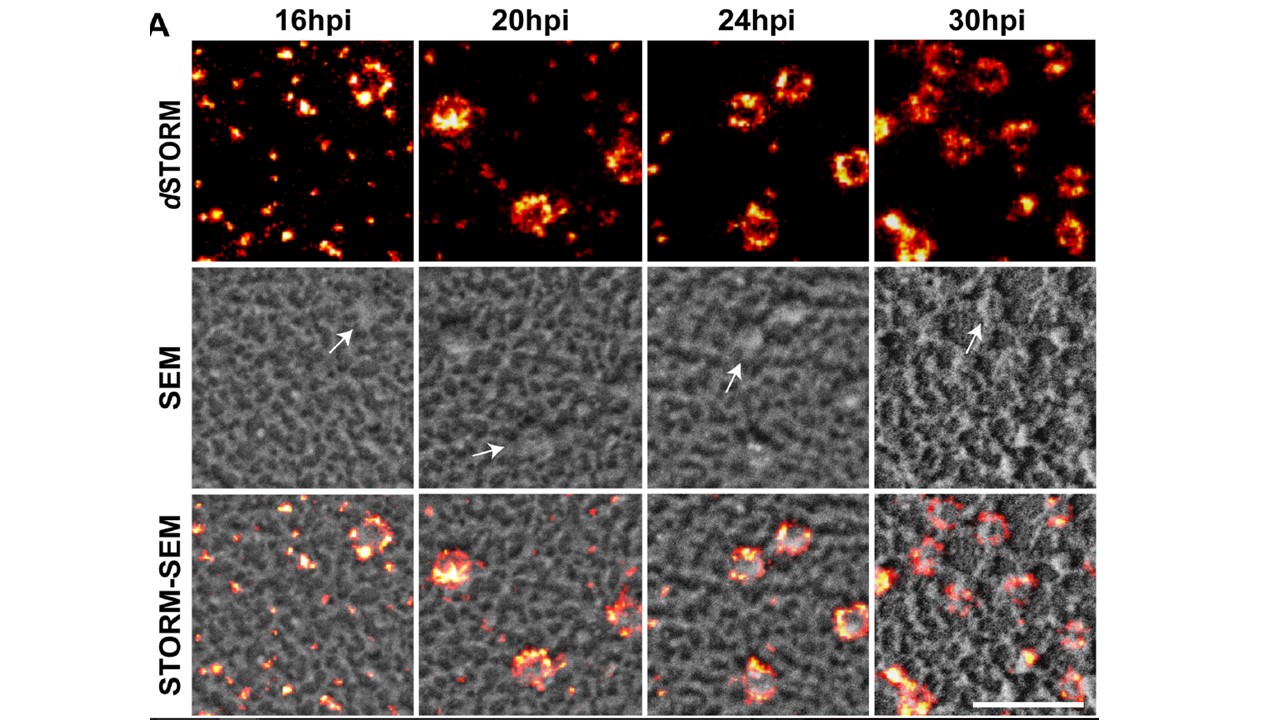The density of KAHRP-labelled ring structures increases during parasite development. (A) CS2-infected RBC membranes imaged by dSTORM and SEM during knob formation. Representative 1 x 1 μm sections are presented from cells at 16, 20, 24 and 30 h post-invasion (hpi). Scale bar: 500 nm. At 16 h post-invasion, a high density of puncta is evident with relatively few ring structures. During parasite maturation, the number of puncta decreases while the number of rings increases, eventually reaching 7.8 ± 0.6 per μm2, which is roughly equal to the number of knob structures observed from the external surface (9.4 ± 0.6 per μm2;
Looker O, Blanch AJ, Liu B, Nunez-Iglesias J, McMillan PJ, Tilley L, Dixon MWA. The knob protein KAHRP assembles into a ring-shaped structure that underpins virulence complex assembly. PLoS Pathog. 2019 May 9;15(5):e1007761. PMID: 31071194
